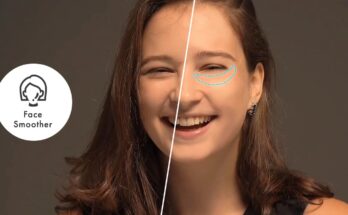In the fast-paced digital era, technology has become an integral part of our daily lives, transforming the way we communicate, work, and access information. While these advancements bring numerous benefits, they also pose challenges for individuals with disabilities. Voice Access technology has emerged as a groundbreaking solution, aiming to bridge the accessibility gap and empower users with a more inclusive and seamless digital experience.
Understanding Voice Access: Voice Access refers to the use of voice commands to interact with and control digital devices and applications. It is designed to cater to individuals with various disabilities, including those with motor impairments, visual impairments, or conditions that may limit the use of traditional input methods such as keyboards or touchscreens.
How Voice Access Works: Voice Access relies on sophisticated natural language processing and voice recognition algorithms. The technology enables users to navigate, operate, and interact with their devices using spoken commands. Whether it’s sending a text message, opening an application, or browsing the internet, users can accomplish these tasks by simply speaking to their devices.
Benefits of Voice Access:
- Enhanced Accessibility:
- Voice Access technology significantly enhances accessibility for individuals with motor disabilities. Those who may have difficulty using traditional input methods can navigate and control their devices with ease.
- Inclusive Communication:
- Voice Access promotes inclusive communication by providing a means of interaction for individuals with visual impairments. Through spoken commands, users can access information, send messages, and perform various tasks without relying on visual cues.
- Increased Productivity:
- The hands-free nature of Voice Access contributes to increased productivity. Users can perform tasks efficiently without the need to physically interact with a device, making it a valuable tool for multitasking and time management.
- User-Friendly Interface:
- Voice Access technology often comes with intuitive interfaces, making it user-friendly for individuals of all ages and technological backgrounds. This simplicity ensures a positive user experience and encourages widespread adoption.
Applications of Voice Access:
- Mobile Devices:
- Voice Access is commonly integrated into mobile devices, allowing users to control various functions, access apps, and navigate menus using voice commands. This is particularly beneficial for individuals who may struggle with touchscreens or have limited dexterity.
- Smart Home Devices:
- The integration of Voice Access in smart home devices enables users to control lights, thermostats, security systems, and other connected devices through spoken commands. This enhances the independence and convenience of individuals with disabilities.
- Computers and Laptops:
- Voice Access extends its functionality to computers and laptops, offering users the ability to dictate text, open applications, and perform a range of tasks without the need for manual input. This is especially valuable for individuals with mobility challenges.
- Web Accessibility:
- Voice Access contributes to web accessibility by allowing users to navigate websites, click on links, and interact with online content using voice commands. This ensures that individuals with disabilities can access information on the internet with greater ease.
Challenges and Limitations:
- Accuracy and Recognition:
- Voice Access technology’s effectiveness is contingent on accurate speech recognition. Challenges arise when dealing with diverse accents, languages, or speech impediments, potentially leading to errors in command interpretation.
- Privacy Concerns:
- The always-listening nature of Voice Access raises privacy concerns for users. Addressing these concerns requires robust security measures to safeguard personal information and ensure user confidence in adopting the technology.
- Learning Curve:
- While Voice Access is designed to be user-friendly, some individuals may face a learning curve in adapting to the new interface. Education and support are crucial to help users feel comfortable and proficient with voice commands.
- Limited Application Support:
- Not all applications and devices are optimized for Voice Access, limiting its scope of functionality. A broader integration of this technology across platforms is essential to maximize its impact.
The Future of Voice Access:
- Advancements in Natural Language Processing:
- Ongoing developments in natural language processing are expected to improve the accuracy and efficiency of voice recognition systems. This will enhance the overall user experience and make Voice Access technology more reliable.
- Integration with Emerging Technologies:
- Voice Access is likely to integrate with emerging technologies such as augmented reality (AR) and virtual reality (VR), expanding its applications and providing users with even more immersive and accessible experiences.
- Cross-Platform Integration:
- Efforts to standardize and integrate Voice Access across different operating systems and applications will contribute to a more seamless experience for users. This cross-platform compatibility is crucial for widespread adoption.
- Customization and Personalization:
- Future iterations of Voice Access may focus on customization and personalization features, allowing users to tailor the technology to their specific needs and preferences. This could include voice recognition training and personalized command sets.
Conclusion:
Voice Access technology represents a significant stride towards a more inclusive digital landscape. By empowering individuals with disabilities to interact with technology through voice commands, this technology enhances accessibility, fosters independence, and promotes a more inclusive society. While challenges exist, ongoing advancements and a commitment to addressing these issues will likely propel Voice Access into the mainstream, ensuring that everyone can participate in the digital age regardless of their abilities. As we look ahead, the fusion of Voice Access with emerging technologies holds the promise of a future where accessibility is not just a feature but an inherent aspect of the technological landscape.




